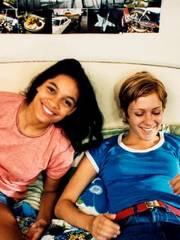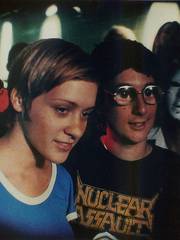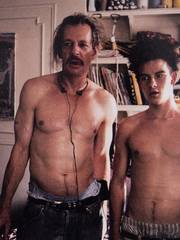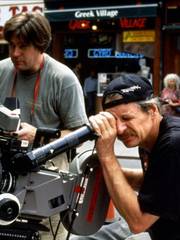Kids is Larry Clark and Harmony Korine's 1995 film that followed the lives of a group of teenagers in NYC during the AIDS epidemic. Containing themes of sex, drugs, theft and violence, the film is often labelled as controversial and exploitative, which aren't exactly unreasonable comments. But there's no denying that Kids has had a monumental cultural impact on streetwear. From collaborations with brands like Flagstuff and Supreme, to seeing mid '90s NYC trends coming back around almost 30 years later. We break down what sets this film apart from the rest...


Real Kids No Actors
The use of real teenagers instead of actors added a raw, unfiltered authenticity to the narrative. By casting non-professionals, Clark captured genuine emotions and experiences that resonated with audiences. The film's portrayal of youth culture, with its candid depiction of sexuality, drug use, and recklessness, felt uncomfortably real, sparking conversations about societal issues and the challenges facing teenagers. This unconventional approach blurred the lines between fiction and reality, immersing viewers in the gritty, urban landscape of New York City, giving the film an almost documentary kind of feel. Leo Fitzpatrick, Justin Pierce, Chloe Sevigny, Rosario Dawson, and Harold Hunter all in their film debuts in Kids. Justin was in the first ever Supreme skate team, and Harold became closely associated with the brand due to being so deeply rooted in NYC skate culture. Leo was also a skater and a New Yorker. Chloe hailed from a small town in Connecticut and travelled a lot to New York before moving there, she was acquiring an "it girl" status from modelling and appearing in music videos for Sonic Youth and The Lemonheads. Rosario was a born and bred New Yorker before she was cast. There was a real sense of authenticity in casting real New York kids instead of professional actors, these teenagers understood the film. If you were a 17 year old in the '90s in New York or a comparable city, you could probably relate to some level. If you were younger, you probably looked up to these kids, and thought this film was some of the coolest shit you've ever seen, fiction or not.


Mid '90s NYC Streetwear
Streetwear emerges as a vital visual element of the film, reflecting the youth culture of the time. Characters wore oversized hoodies, baggy denim, graphic t-shirts and brands like Stussy, Supreme, and Dickies which all ran parallel to the skateboarding uniform at the time, and still do this day. The wardrobe in the film isn't too forced or too try-hard, it feels very natural and serves as a symbol of identity and belonging in that subculture of NYC skateboarding, mirroring the authentic style of real-life teenagers. Less is more sort of vibe, not trying too hard. There was no internet, Pinterest or Instagram back then, if you saw another kid wearing a pair of Vans, chances are they skated, they were one of your people. You weren't influenced by mass trends on social media, because social media didn't exist yet. You liked what you saw in real life, on TV and in magazines. Supreme's box logo t-shirt makes a very brief first on-screen appearance in the film. None of the main characters were dressed in Supreme, which opened a year prior to Kids, but a flash of the box logo appears for a split second during the Washington Square Park fight scene.


Legit Screenwriting
Written by Harmony Korine when he was just 19, the entire viewpoint of a film about teenagers in New York was written by a teenager in New York, so it can't get much more legit than that. It delves into the raw and unfiltered reality of city kids during the '90s, the language, the mannerisms, and the candid-feeling dialogue. He doesn't shy away from the controversial or uncomfortable, the narrative feels hauntingly real.


Larry Clarks Directorial Approach
Harmony Korine wrote the screenplay and handed it over to Larry Clark to direct. Larry came from a pretty gritty, exposed to "real life" type background, his pre-1995 works like Tulsa (1971) and Teenage Lust (1983) solidify this. So the combination of Harmony Korine and Larry Clark meant that the film wasn't going to sugar coat anything, or shy away from intimate details. It's like it was understood from a first hand point of view, and already experienced by the creators. Larry Clark already had a certain lens for authentic storytelling without glamourising, nor sugarcoating it. Just real life from his experience, authentic to that time and place.




.webp?v=1711026253472&options=w_180)
.webp?v=1711026169904&options=w_180)